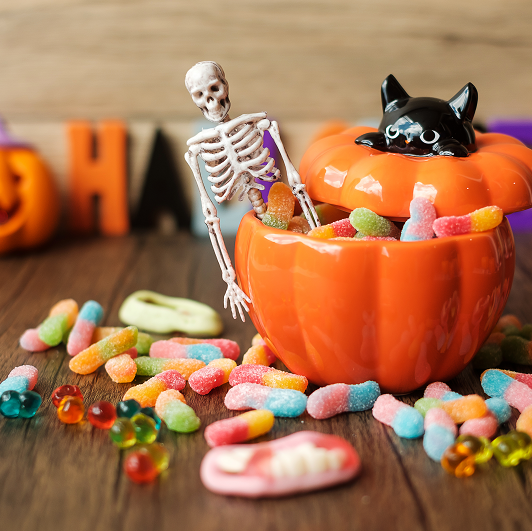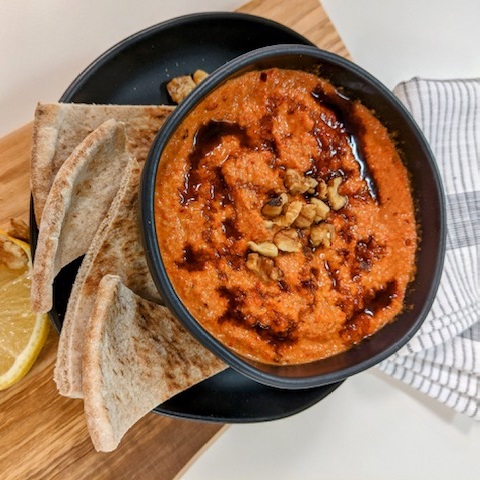What do Dietitians Give Out at Halloween?

October 20, 2022
Halloween can be a real treat, but it can also be a time of overindulging on sweets. It’s nearly impossible to prevent your child (and you) from being exposed to candy this time of year, so set ground rules in advance for candy consumption.
Registered oncology dietitian, Kaitlin McKenzie, shares how to have a conversation with your child before trick-or-treating and what types of treats are healthier alternatives.
Healthier Halloween Picks
Not all treats are created equal. Some Halloween snacks pack less of a sugary punch.
Here are some Halloween picks that can satisfy kids in the neighborhood without adding too much sugar. Consider handing out the following:
- Dark chocolate with almonds
- Raisinets
- Non-candy items (like play-dough, bouncy balls, etc.)
- Small water bottle / organic juice box
- Fruit pouches
- Bag of popcorn or pretzels
Establish a Plan for Enjoying Candy
“Depending on your child’s age, whether it’s their first time going door to door, or they’re been doing this for a few years now, your conversation will vary. The main goal is to be on the same page about what the process of trick-or-treating looks like, and what is going to happen with all of their candy,” shares Kaitlin.
“You can ask your child to identify what their three favorite types of candy are, and say before the end of the night, they can have one of each. It can be hard to control this, but you want to avoid your child eating endless candy as the night progresses,” says Kaitlin.
Before diving into their bucket of candy, your child will know you discussed only having a few pieces, and saving the rest for another day.
Set Up a Candy ‘Trade In’ Program
If you are looking to limit overall candy consumption, consider a 'trade in' program where children can exchange their trick or treat haul for new toys or a special treat.
“Children can still have the fun and experience of collecting candy with their friends but at the end of the night they swap their basket for a new toy, a movie theater ticket, or maybe an ice cream sundae,” shares Kaitlin.
A trade-in program also works well for children with severe allergies or food sensitivities; they can partake in the day but stay safe by avoiding cross-contamination and still earn their own special treat or celebration at the end of the night.
Set a Date to Say Goodbye to the Extra Candy
Some kids can hit the jackpot, and come home with an entire pillowcase full of candy. To avoid eating candy for the next few months, set a date that you will get rid of the extra candy.
“Bring the extra candy to a potluck party, or even donate it. Some organizations are happy to accept unused, wrapped candy to distribute to those in need,” says Kaitlin.
In the end, it’s all about moderation while trying to avoid a temper tantrum.
Also, keep in mind the shelf-life of the candy in your home – treats like candy corn may only last three months if the packaging is opened, while something like dark chocolate could last up to two years if unopened. Be sure to throw away anything that has expired.
Next Steps & Resources:
- Meet our source: Kaitlin McKenzie, MS RDN
- To make an appointment with a physician near you, call 800-822-8905 or visit our website.
The material provided through HealthU is intended to be used as general information only and should not replace the advice of your physician. Always consult your physician for individual care.






